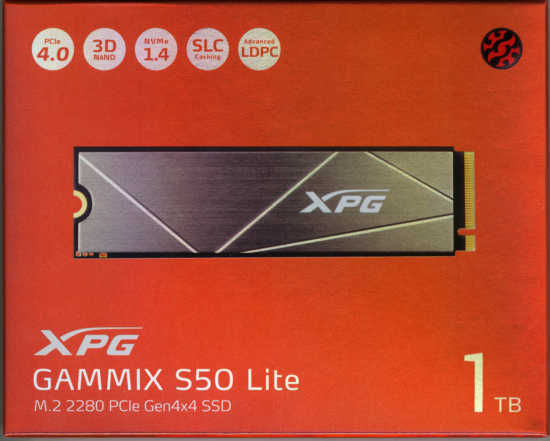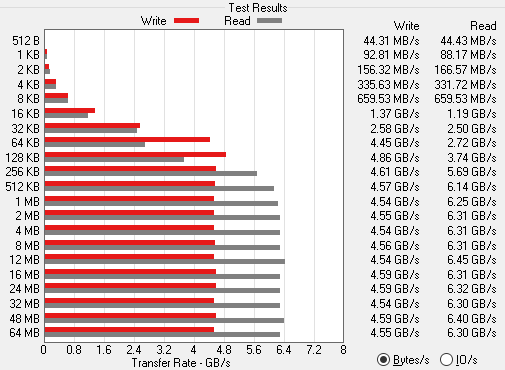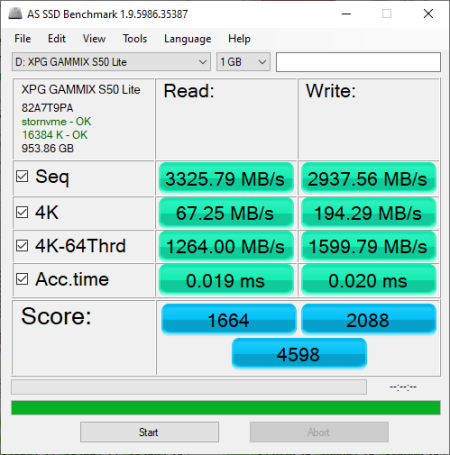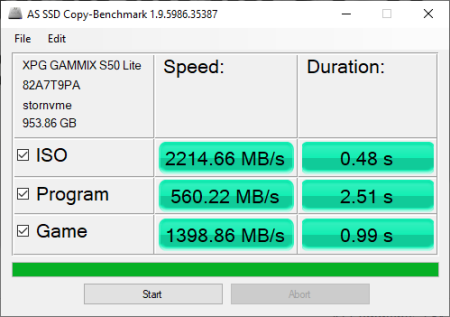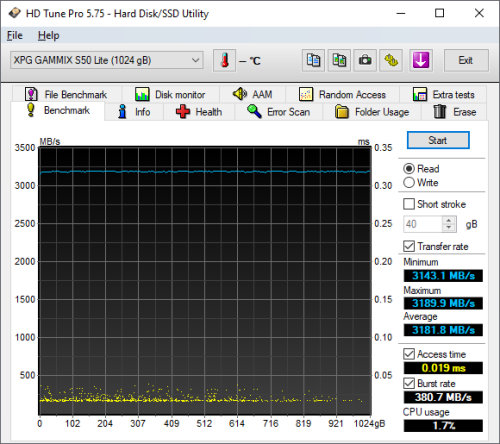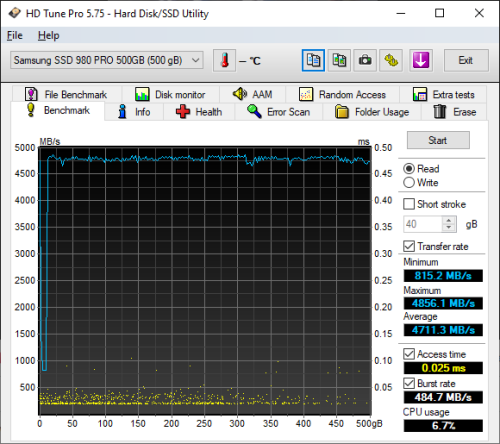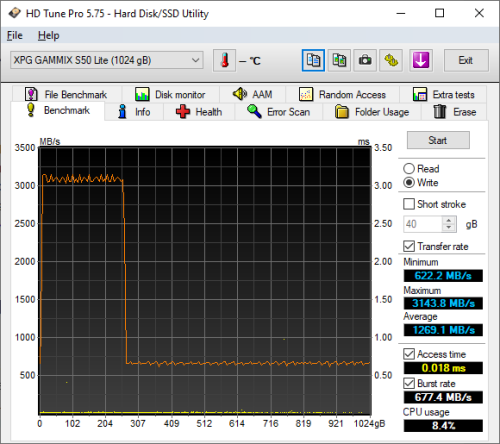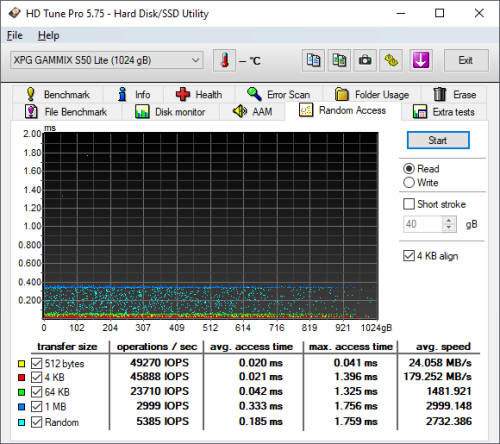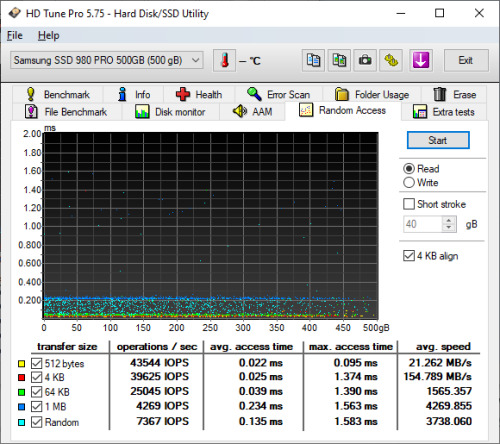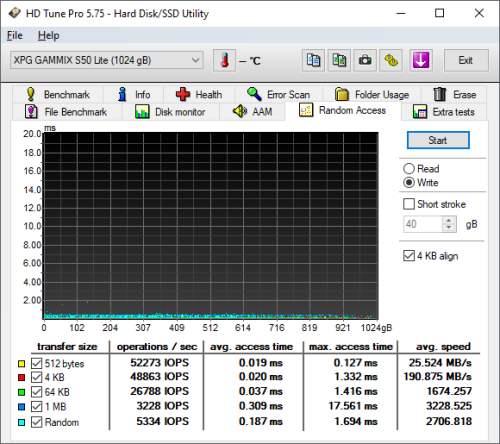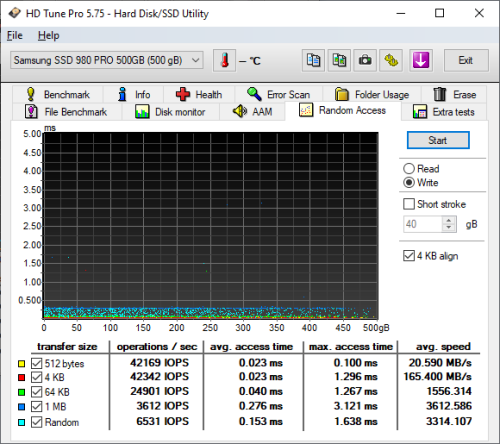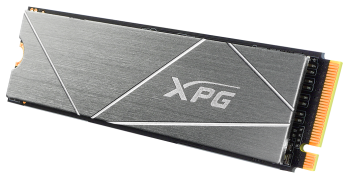

Model: ADATA XPG GAMMIX S50 Lite 1TB PCIe 4.0 M.2 Solid State Drive
Manufacturer: ADATA Technology
Provided By: ADATA Technology (USA)
ADATA Technology is one of the world's leading manufacturers of high performance memory modules and data storage solutions. Founded in 2001 with a staff of 20, this Taiwanese company set itself apart from the competition early on thanks to its professionalism, industry know-how and eye-catching product designs. Today, ADATA continues to lead the way through constant innovation and development of products that exceed customer expectations. Backed by technical expertise, state-of-the-art manufacturing facilities and premium customer service, ADATA currently offers a variety of products including DRAM modules, USB flash drives, memory cards, solid state drives and portable hard drives.
One of the latest additions to ADATA's line of solid state drives is the XPG GAMMIX S50 Lite. Designed with gamers, overclockers and enthusiasts in mind, this heatsink-equipped, M.2 form factor drive is powered by Silicon Motion's new SM2267 controller and is available with up to 2TB of 3D TLC NAND flash. The GAMMIX S50 Lite also utilizes dynamic SLC caching and a DRAM cache buffer to improve read and write performance as well as Low-Density Parity Check (LDPC) code technology, End-To-End (E2E) data protection and a RAID engine to ensure data integrity and stability. To top it all off, the GAMMIX S50 Lite is equipped with an ultra-fast PCIe Gen4 x4 NVMe 1.4 interface and is capable of 3,900 MB/s read and 3,200 MB/s write speeds.
The XPG GAMMIX S50 Lite is available in 1TB and 2TB capacities. For this review, ADATA sent us the 1TB version of the drive which is capable of delivering up to 3,900 MB/s sequential read and 3,200 MB/s sequential write speeds as well as up to 380,000 random read and 540,000 random write IOPS.
| ADATA XPG GAMMIX S50 Lite 1TB PCIe 4.0 M.2 Solid State Drive | |||||||||||||||||||||||||||||||||||||||
General Specifications
Performance
Reliability
Power Consumption
Environmental
Dimensions and Weight
Other Features
|
Needless to say, this is only a taste of what the XPG GAMMIX S50 Lite has to offer. To give you an idea of what to expect, we'll take a closer look at ADATA's new PCIe 4.0 SSD and then see how well it performs. Does the GAMMIX S50 Lite have what it takes? Can it deliver the value and performance we've come to expect from ADATA? Keep reading as we find out.
The GAMMIX S50 Lite comes in a small red box. Along with a picture of the drive, the front advertises a number of its key features including its 1TB capacity, PCIe 4.0 interface, support for NVMe 1.4, SLC caching and 3D NAND. The back of the box provides a bit more information regarding the GAMMIX S50 Lite's features and performance.
Physical Features:
The GAMMIX S50 Lite uses the 2280 form factor for M.2 (NGFF) SSDs. It measures 80 x 22 x 4.3 mm and tips the scales at 10g. The drive also has an "M key" edge connector which provides PCIe SSDs with up to 4x lanes of bandwidth.
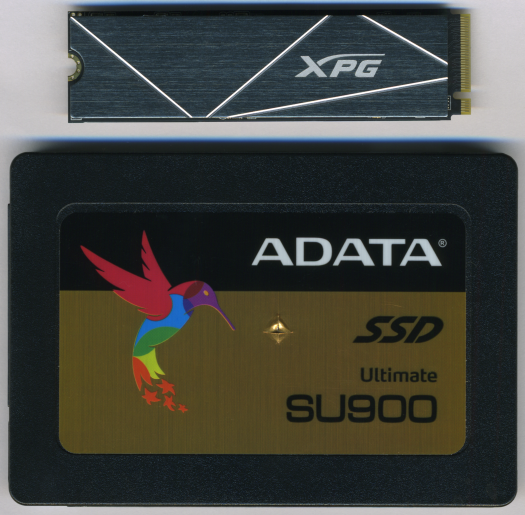
The GAMMIX S50 Lite uses Silicon Motion's SM2267 controller. Designed to meet the needs of mainstream SSDs, this PCIe Gen 4 x4 controller supports four channels with up to eight chip enables (CE) per channel. The SM2267 also supports the latest 3D NAND from all major manufacturers and features Silicon Motion’s proprietary NANDXtend error-correcting code (ECC) technology, SRAM ECC and end-to-end data path protection.


For the 1TB version of the GAMMIX S50 Lite, ADATA has opted to use its own Micron manufactured 96-layer 3D TLC NAND flash. If you'd remove the heatsink and the label on the back, you'd find two 256GB NAND flash packages on either side of the PCB. The drive also has a single 1GB SK Hynix DDR4 SDRAM memory chip that is used for caching.
Like ADATA's other SSDs, the XPG GAMMIX S50 Lite works with their SSD Toolbox. This free downloadable utility is an easy way for users to obtain information about their drives and change various system settings. Additionally, it can be used to speed up your SSD and even improve the endurance of a drive.
When you run ADATA SSD Toolbox, the main screen displays information about your drives. From here, users can view information like the capacity, used space, temperature, health and lifespan of each drive. By clicking on the tabs, you'll also find information like the model name, firmware version and serial number and connection speed.

The SSD Toolbox offers two different diagnostic scans. The quick diagnostics scan runs a basic test on free space and is usually completed in under two minutes. The full diagnostics scan runs a read test on all used space and a write test on all free space of the selected drive. Needless to say, the full scan takes much longer to complete.

ADATA's SSD Toolbox also includes a number of utilities. Along with the ability to do a secure erase, users can update a drive's firmware, upgrade the software and export a log file containing information about your system and drives.
The System Optimization option gives users the ability to run a TRIM command on a selected SSD. Users also have the ability optimize their OS by enabling features like superfetch, prefetch and automatic defragmentation.
SSD Toolbox can also be used to view information about your system. The utility displays a number of things including the operating system, CPU, amount of usable RAM and the model and BIOS version of your motherboard.
The test system used in this review is equipped with an AMD Ryzen 3 3100 CPU, MSI B550 GAMING PLUS motherboard, 16GB (8GB x 2) of Crucial Ballistix 3200 MHz DDR4 memory, Crucial P5 1TB SSD and a GIGABYTE GeForce GTX 1060 WINDFORCE OC 6G graphics card. For the operating system, I used the latest version of Windows 10 Pro.
To test the performance of ADATA's XPG GAMMIX S50 Lite SSD, I ran a series of benchmarks using CrystalDiskMark, HD Tach RW, ATTO Disk Benchmark, AS SSD, HD Tune Pro, Anvil's Storage Utilities, Iometer and PCMark. For comparison, I've also included test results from the Silicon-Power UD70, Crucial P2, Samsung's 980 PRO, SK hynix Gold P31, Crucial P5, ADATA SWORDFISH, ADATA FALCON, Lexar NM610, Silicon Power P34A60, Patriot P300, Plextor M9PG Plus, Plextor M9PY Plus, ADATA XPG SX6000 Pro, Western Digital WD Black SN750, Samsung 970 EVO Plus, ADATA XPG SX8200 Pro, Crucial P1, ADATA XPG SX8200, Western Digital WD Black NVMe, Samsung 970 EVO, Samsung 970 PRO, Plextor M9Pe, Plextor M8Se, Patriot Hellfire, ADATA XPG SX8000, Samsung 960 PRO, Toshiba OCZ RD400, Samsung 950 PRO, Samsung 870 QVO, Silicon Power P60, SK hynix Gold S31, ADATA Ultimate SU750, Samsung 860 QVO, Samsung 860 PRO and Crucial MX500.

As I mentioned earlier, the XPG GAMMIX S50 Lite is based on Silicon Motion's SM2267 controller chip. Looking at the screenshot above, you can see that it performs equally well with both incompressible (0%) and compressible (100%) data.
CrystalDiskMark 7.0.0:
First, I ran a few quick tests using CrystalDiskMark. This benchmark measures the performance of a storage device by testing its sequential and random read and write speeds. For this test, we're using the peak and real world profiles.

According to ADATA, the 1TB version of the GAMMIX S50 Lite is capable of reading at 3,900 MB/s and writing at 3,200 MB/s. While the drive had no problems reaching its rated write speed, it came up short in CrystalDiskMark's sequential read speed test.

As you'd expect, the GAMMIX S50 Lite wasn't nearly as fast when tested with the "real world" profile which uses a single thread and a much lower queue depth. Nevertheless, it was still able to read and write at more than 3,200 MB/s.
HD Tach RW 3.0.4.0:
Next, I used HD Tach to test the GAMMIX S50 Lite's read, write and burst speeds as well as its random access time and CPU usage.

Looking at the screenshot above, you can see that the GAMMIX S50 Lite had average read and write speeds of 2007.5 MB/s and 773.2 MB/s respectively, as well as a burst speed of 1583.0 MB/s. The screenshot also shows that, like most other TLC-based SSDs, the GAMMIX S50 Lite uses some sort of SLC caching. The drive starts writing at about 2,000 MB/s and then drops to about 650 MB/s when the write operation exceeds the size of the cache.
ATTO Disk Benchmark 4.01:
I also used ATTO Disk Benchmark to test the GAMMIX S50 Lite's sequential read and write speeds. The tests are run using blocks ranging in size from 512B to 64 MB and the total length set to 256MB.
When tested with ATTO, the GAMMIX S50 Lite's read speeds topped out at about 3.62 GB/s and its write speeds at 3.06 GB/s.
AS SSD:
AS SSD is a relatively new benchmark designed specifically for solid state drives. The application contains five synthetic tests used to determine the sequential and random read and write performance of a drive.
AS SSD also includes a copy benchmark. This test copies an ISO (two large files), program (many small files) and game (small and large files), returning the speed and duration of each.
HD Tune Pro 5.75:
Next, I ran a series of tests using HD Tune Pro. This hard disk utility measures a drive's performance by testing its sequential read and write speeds as well as its access time, burst rate and CPU usage. For this review, I'm also going to use it to benchmark the 980 PRO's random read and write speeds, random access times and the number of operations per second.
The GAMMIX S50 Lite performed relatively well when benchmarked with HD Tune. The drive had average read and write speeds of 3181.8 MB/s and 1,269.1 MB/s, respectively.
When reading 4KB blocks, the GAMMIX S50 Lite reached 45,888 IOPS and had an average speed of 179.252 MB/s. The drive was even faster when writing, reaching 48,863 IOPS with an average speed of 190.875 MB/s.
Anvil's Storage Utilities:
Anvil's Storage Utilities is another benchmark designed with SSDs in mind. The standard storage benchmark measures a drive's performance by testing its transfer speeds, access times and IOPS.

Iometer:
Lastly, I ran a series of tests using Iometer. This tool can be configured to benchmark a number of things. In this case, I used it to measure the GAMMIX S50 Lite's read and write speeds and the number of operations per second. The tests were run using random bytes and a queue depth of 3.

The GAMMIX S50 Lite's performance was hit and miss when tested with Iometer. While the drive was able to write at an impressive 3089.53 MB/s, its sequential read speed averaged out at only 2685.98 MB/s.
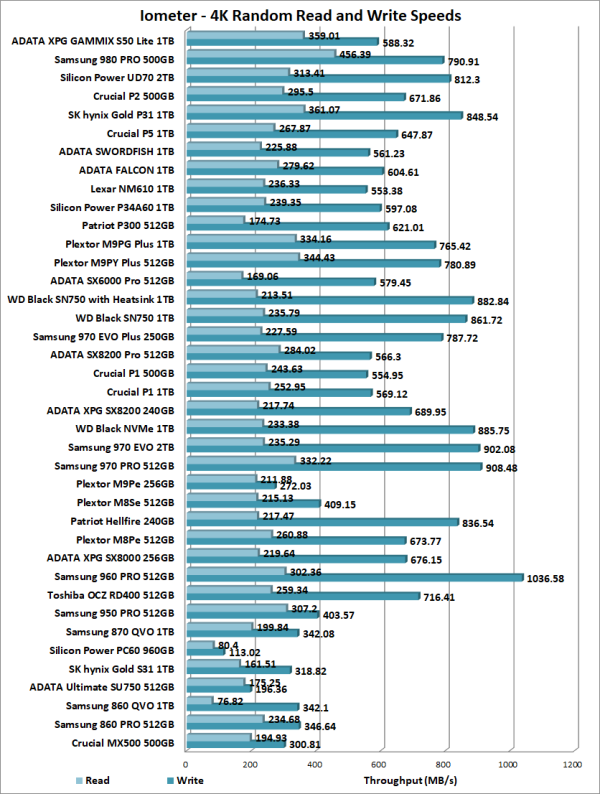
The GAMMIX S50 Lite also performed fairly well when doing random reads and writes. In our tests, the drive was able to read at 359.01 MB/s and write at 588.32 MB/s.
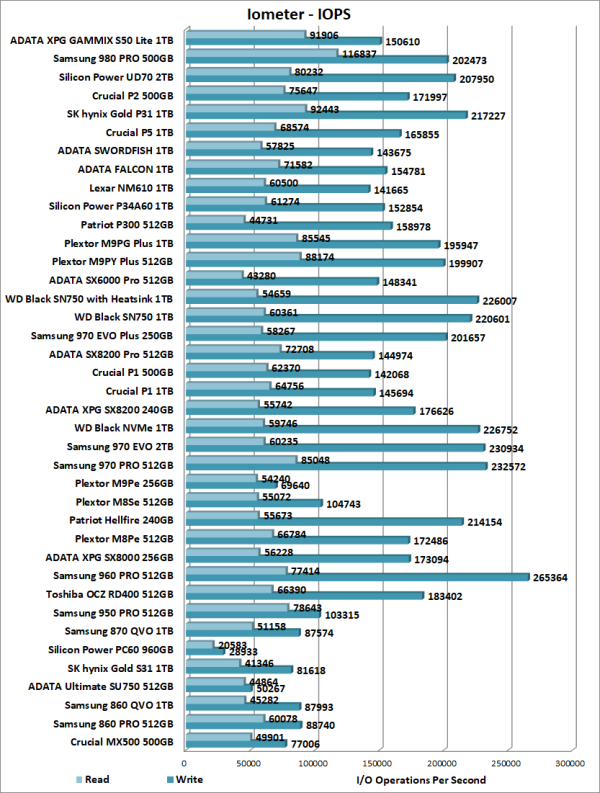
According to ADATA, the 1TB GAMMIX S50 Lite is capable of 380,000 IOPS when reading and 540,000 IOPS when writing 4K blocks. In our tests, the drive reached 91,906 random read IOPS and 150,610 random write IOPS. As with most drives, the GAMMIX S50 Lite performed better at higher queue depths. With four threads and the queue depth set to 32, it reached 327,669 random read IOPS and 274,664 random write IOPS.
PCMark 8 - Storage Test:
PCMark 8 is a complete benchmark for Windows. It includes five benchmark tests, each designed around a specific scenario. The storage benchmark measures drive performance using real-world traces recorded from Adobe Creative Suite, Microsoft Office and a selection of popular games.
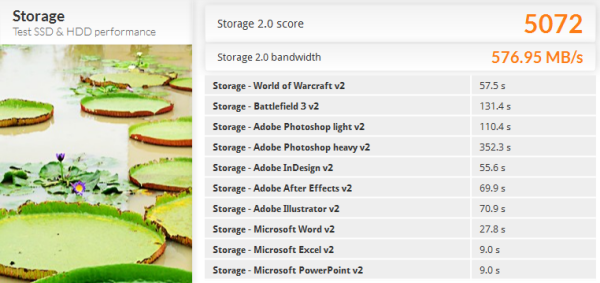
PCMark 8 also includes a consistency test which measures the performance consistency and degradation tendency of a storage system. The test reports the performance level at the start, the degraded steady-state and the recovered state as well as the number of iterations required to reach the degraded state and the recovered state. For this test, we are focusing on the Adobe Photoshop (Heavy) trace and will look at both the bandwidth and latency of the drive


The GAMMIX S50 Lite didn't do as well as some of the other drives in this test. Its bandwidth dropped below 100 MB/s during the degradation and steady state phases, pushing its latency above the 300ms mark. The GAMMIX S50 Lite's performance increased somewhat during the recovery phase. However, it still lagged behind the Crucial P5 and SK hynix Gold P31, topping out at 929 MB/s.
PCMark 10 - Full System Drive Benchmark:
PCMark 10's Full System Drive Benchmark uses a wide-ranging set of real-world traces from popular applications and common tasks to fully test the performance of the fastest modern drives. This benchmark produces an overall score as a measure of drive performance. Comparing devices is as simple as comparing scores. The tests also measure and report the bandwidth and average access time performance for the drive.
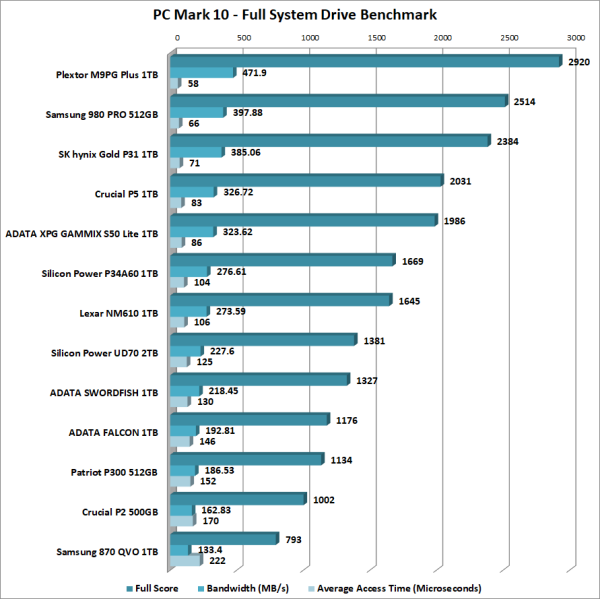
The GAMMIX S50 Lite ended up in the middle of the pack in PCMark 10's Full System Drive Benchmark. While faster than many of the PCIe 3.0 SSDs, it trailed behind the Plextor M9PG, Samsung 980 Pro and SK hynix Gold P31 by a sizeable margin.
TRIM Performance:
While SSD's offer many benefits, there are some downsides to using flash memory. One of the biggest issues people run into is performance degradation. Over time, an SSD will run out of fresh blocks and will have to write over data the file system has marked as deleted. This procedure is very complicated and can slow an SSD's write speeds considerably.
To fix this problem, most manufacturers have added TRIM support to their SSDs. The TRIM command allows an operating system, such as Windows 10, to tell an SSD which data blocks are no longer in use. Using this information, the drive pro-actively erases these blocks and adds them to the free block pool.
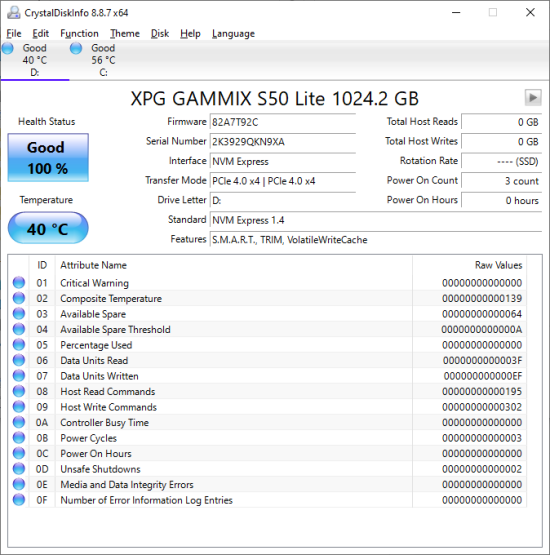
To test the GAMMIX S50 Lite's TRIM and garbage collection functions, I first put the drive in a "dirty" state. I used Iometer to fill 80% of the drive and then ran a random write test for 30 minutes. This had little impact on the GAMMIX S50 Lite's read speed. However, its average writing speed dropped to 645.32 MB/s.

ADATA XPG GAMMIX S50 Lite - Dirty
To see how well the GAMMIX S50 Lite could recover, I let the computer sit for about 30 minutes and then reran the test. The drive wasn't able to reach the factory fresh performance shown in our earlier tests. However, its sequential write speed jumped up to 2906.80 MB/s.

ADATA XPG GAMMIX S50 Lite - After TRIM
Lastly, I used Parted Magic to perform a secure erase on the GAMMIX S50 Lite. With the drive wiped clean, it had average read and write speeds of 3326.76 MB/s and 2963.26 MB/s, respectively.
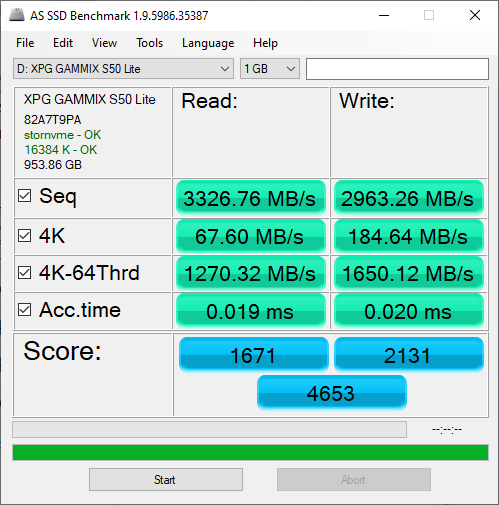
ADATA XPG GAMMIX S50 Lite - Secure Erased
Final Thoughts:
The ADATA XPG GAMMIX S50 Lite is a great choice for the gamer or enthusiast wanting to tap into the capabilities of PCIe 4.0 without spending a lot of money. This heatsink-equipped, M.2 form factor SSD is powered by Silicon Motion's SM2267 controller and is available with up to 2TB of 3D TLC NAND flash. Combine this with a PCIe Gen4 x4 NVMe 1.4 interface and you have an affordable drive capable of delivering up to eight times the performance of your average SATA SSD. In our sequential read and write tests, the 1TB version of the GAMMIX S50 Lite was able to read at speeds as high as 3,891 MB/s and write at speeds in excess of 3,260 MB/s. It also did relatively well in our random write tests, producing more than 150,000 IOPS at low queue depths.
Of course, fast read and write speeds aren't the only things the GAMMIX S50 Lite has to offer. In addition to a good looking, aluminum heatsink, the drive uses dynamic SLC caching and a DRAM cache buffer to improve read and write performance. The GAMMIX S50 Lite also employs LDPC (Low-Density Parity Check) error correction, End-To-End (E2E) data protection and a RAID engine to ensure data integrity as well as AES 256-bit encryption for data security. Last, but not least, the drive is backed by a 5 year warranty.
The XPG GAMMIX S50 Lite is available now in 1TB and 2TB capacities and can be purchased through retailers like Amazon for $140 and $280, respectively.

Highs:
- Available in 1TB and 2TB capacities
- PCIe 4.0 x4 interface with NVMe protocol
- Silicon Motion SM2267 controller
- Equipped with 3D TLC NAND
- Good sequential read and write speeds under most conditions
- Good random read and write performance
- Small M.2 2280 form factor
- Intelligent SLC caching
- Advanced hardware LDPC ECC technology
- Aluminum heatsink
- AES 256-bit encryption
- Works with ADATA's SSD Toolbox software
- Affordably priced
- 5 year warranty
Lows:
- Not as fast as other PCIe 4.0 SSDs
- Write speed drops considerably when SLC cache is full
